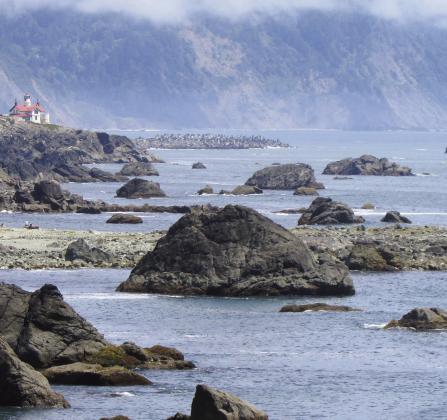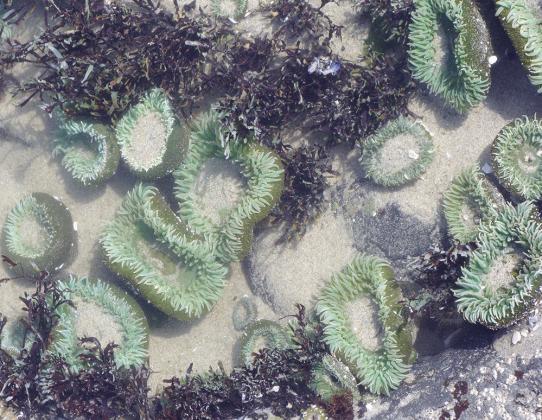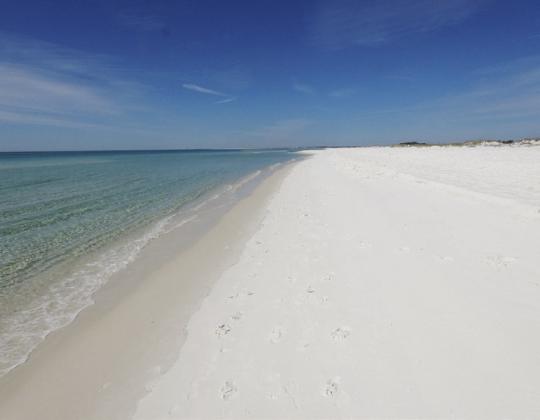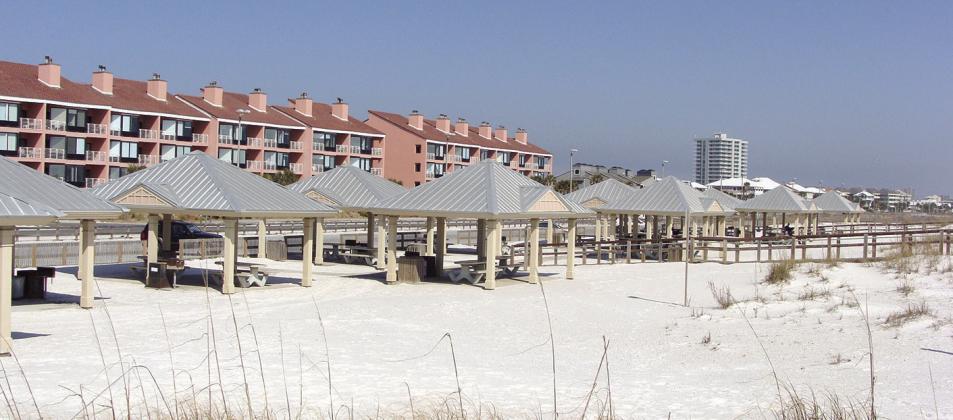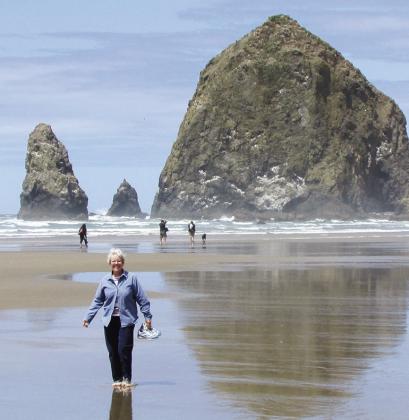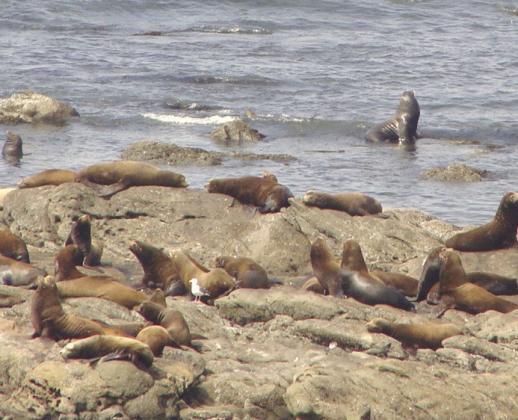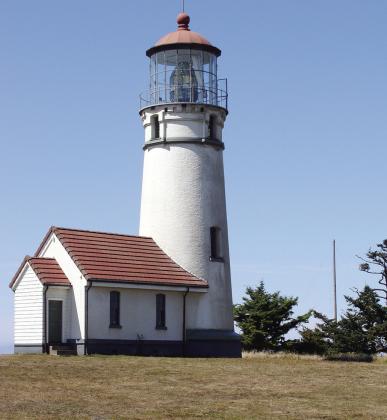YOU MAY HAVE HEARD that, when it comes to vacations, there are mountain people and beach people. That assumes you can’t be both. Shirley and I choose destinations based on the season. Mountains are mostly for summer. Love the mountains. Hate the cold. Beaches, on the other hand, can be enjoyed any season. Depending on where you are, of course.
At this time of year, the beach must be somewhere sunny and warm. The rest of the year offers so many options you could spend a lifetime visiting the dramatically different kinds. There is not much similarity between Acadia National Park in Maine and Everglades National Park in Florida, and there are numerous attractive options in between.
Let’s begin by defining “beach” as considerably more than just sand and water. Several of the beaches we have enjoyed didn’t have any sand at all. Acadia, for example, is mostly granite. There is a reason they call it the “Rockbound Coast of Maine.” At Thunder Hole, an increasingly narrow rock fissure compresses onrushing waves so they shoot 40 feet in the air with a great roar. That may not be your idea of a beach, but the lobster is always really fresh.
There are reasons to choose particular kinds of beaches for specific activities. Waves for surfing. Breezes for kite flying. Sheltered, calm waters for safe swimming. Fishing. Collecting shells and driftwood. Trails for dune buggies. Sand castles. Tidepools for admiring starfish and sea urchins. Watching seals, whales, manatees, sea turtles, shorebirds, and other wildlife. Scenic lighthouses. College students even look forward to spring break at the beach to catch up on their studies before finals.
Even some older people think the most attractive thing about any beach is the quality of nearby dining and entertainment. Shirley and I, on the other hand, prefer beaches with long stretches of quiet solitude. Fortunately, you can have it either way even close to major population centers or resort communities.
Delmarva is the 70-mile-long peninsula shared by Delaware, Maryland, and Virginia between the Atlantic and Chesapeake Bay. With more than 2,000 miles of coastline, it has numerous beaches that attract throngs of people. Our favorite Delmarva beach is at Assateague Island National Seashore. It is far south on the peninsula, isolated from the hub-bub of resort communities and boisterous merrymakers. There may be a few surfers or the fliers of colorful, exotically shaped kites. People tossing balls for their Lab to retrieve. Here and a there a beach umbrella with a couple reading or snoozing in its shade.
The main attraction at Assateague is not the beach but the wild ponies whose ancestors were shipwrecked by Spanish galleons 400 or 500 years ago. You may be familiar with Misty of Chincoteague, the children’s novel about the adoption of a wild pony. The ponies reproduce enthusiastically so, to keep the herd in check, there is an annual roundup and auction. They may look tame, but they are wild animals that their new owners will gently domesticate.
Farther south are the islands in the Outer Banks of North Carolina, sticking out into the Atlantic like the belly of a pregnant woman. At OBX, you can have the beach the way you like it. There are plenty of rental properties and a plethora of commercial establishments for those who love resorts. Past the resorts is Cape Hatteras National Seashore with campgrounds and relatively private stretches of beach.
The Wright Brothers chose Kitty Hawk for the strong prevailing winds that helped their aircraft gain lift for the first flight in 1903. That weather pattern is why this is called the Graveyard of the Atlantic. More than 5,000 ships have been lost there since record keeping began in 1526. The wind can also interfere with your day at the beach by kicking sand in your face. Even so, it doesn’t seem to keep people away.
In Florida, St. Augustine promotes tourism with the slogan “Forty Miles of Beach and the Rest is History.” Founded in 1565, it is the oldest city established by Europeans in North America. The Historic District and Castillo de San Marco are always worth a visit, but we spend most of our time on Anastasia Island just across the Bridge of Lions. The beautiful, four-mile-long beach is close to the city but feels far from the madding crowd. If you are interested in more than a quiet stroll, you can rent a surf board, boogie board, paddle board, canoe or kayak, or a fat-tired bicycle for easy riding on sand.
Florida has 8,436 miles of coastline so, as you would expect, it is virtually one long beach. There are 75 incorporated towns with “beach” in their name. We have managed to hit quite a few, but our favorite is in the Panhandle. If you think sand is just sand, you have not experienced the soft, white powder sugar sand between Panama City and Pensacola. This sand is a paradox. The softest sand is made of the hardest rock, quartz, washed down eons ago from the Appalachians when they were among the highest mountains in world. The other minerals that came with the quartz have long since been ground to dust and blown away. Quartz sand is so soft because it has been reduced to tiny crystals.
Gulf Islands National Seashore on Santa Rosa Island is across two long bridges from Pensacola. From Fort Pickens Campground. It is a short walk to beaches on either the Gulf side or the Pensacola Bay side of the narrow island. If you are not into camping, just outside the park boundary are all the resort accommodations and entertainment you could wish.
The beach on the Gulf side is simply outstanding. Above the high-water mark, the sand is so deep and soft that you sink in and get a good workout in just a one-mile stroll. Down at water’s edge, the damp sand is compacted for much easier going. Pelicans cruise by and dive for fish. Royal terns, herring gulls, kittiwakes, curlews, willets, and sandpipers scurry up and down in search of meals. Little ghost crabs hustle back to their holes or hold still, pretending they are invisible.
Beach combers sort through shells, but most of the good ones were always picked up the day before no matter what day it is. Surf casting is popular, and fishing boats drift through the shallows. Families come to build sand castles and fly kites. There is often a lot of activity, but there is so much beach it never seems crowded. Once you get 100 yards away from the main access point, you can often look up or down the beach and see no one at all.
There is a similar experience at Padre Island near Corpus Christi, TX. We used to stay at Malaquite Campground, but it was closed during one of those government shutdowns. So, we parked our rig on the hardpacked sand and found we actually liked it better right at water’s edge. The sound of surf during the night and sunrise over the water were still more reasons to love it.
When we were there, rangers and volunteers were releasing rescued sea turtles that had been cold stunned or injured by predators. About two hundred turtles were carried into the surf while crowds of visitors and TV crews enjoyed the show. When the temporary crowds dispersed, it was easy to walk a mile or so and meet less than a dozen other lovers of quiet beaches.
You may have heard that there are beaches in Hawaii. You could choose Waikiki with Diamond Head in the background to hang out with a few thousand of your closest friends. There is always enough surf for casual messing around at Waikiki, but winter storms can produce real surf that has been building for a thousand miles before breaking against the shore. Locals and avid surfers rush to the far side of the island when word spreads that surf is up. It is worth seeing even if you are too sensible to go out there.
The islands were born of volcanoes, so there are beaches of black pebbles that click and clack as the surf lifts and tosses them about. The black beaches on Maui are reached via the 64-mile road to Hana. It is narrow with 600 or so sharp curves high on the cliff face. Along the way are waterfalls and dense rain forest with exotic tropical flowers. The black beach is a curiosity, but the road to Hana is the adventure.
Another of our favorite beaches is Anchor Point in Alaska, marked by a sign proclaiming it the most westerly place in North America accessible by road. The beach is sand near the high-water line but gravel and boulders at water’s edge and offshore. The Cook Inlet is a great place to fish, so it attracts boaters. Eagles swoop down for fish, steal from other birds, or feed on the fish heads and carcasses tossed from boats.
For people whose priority is spectacular scenery, the attraction at Anchor Point is the view of four volcanic mountains in the Ring of Fire directly across Cook Inlet. The place got its name when Capt. James Cook lost an anchor there in 1778 when he was searching for a Northwest Passage around North America.
Other rocky-gravely beaches with occasional stretches of sand are along the coast of Washington and Oregon. Kite flying is encouraged by a steady onshore breeze that also pulls kite boarders, wearing full-body wet suits. Swimmers typically do not go into the water because of its icy temperatures. The thousands of seals and sea lions have natural wet suits, of course. Even they seem to spend much of their time snoozing on rocks in the sunshine once they are finished quarreling over the more desirable places.
When the tide is out, there are other things to do. Starfish, sea urchins, and shell fish are left in shallow tidepools where they are easy to observe up close. Near the tide pools, Shirley met a man and his daughter poking about in the gravel searching for agates. They showed her how to identify the translucent rocks that come in a wide range of vibrant colors. Some had already been smoothed and polished by wave action and others were headed to a rock tumbler.
Sea stacks are the picturesque vertical standing rocks of various sizes and shapes protruding from the water. A few are big enough for a small forest of trees on top, but most are barren monoliths scrubbed clean by wind and water. They are beautiful if you are safely on shore but hazardous for those at sea. That’s why there are 11 lighthouses on the Oregon coast and 18 in Washington. If you like lighthouse tours, that’s probably enough to drive your traveling companion to distraction. Not that we would know from personal experience, mind you.
Beaches have much more to offer than sand and water. Sampling even a few of the wide variety can be just a walk in the park.
LeMoyne Mercer is the travel editor for Healthy Living News. You might want to see more of his stories and photos at AnotherWalkinthePark.blogspot.com. Ρ

